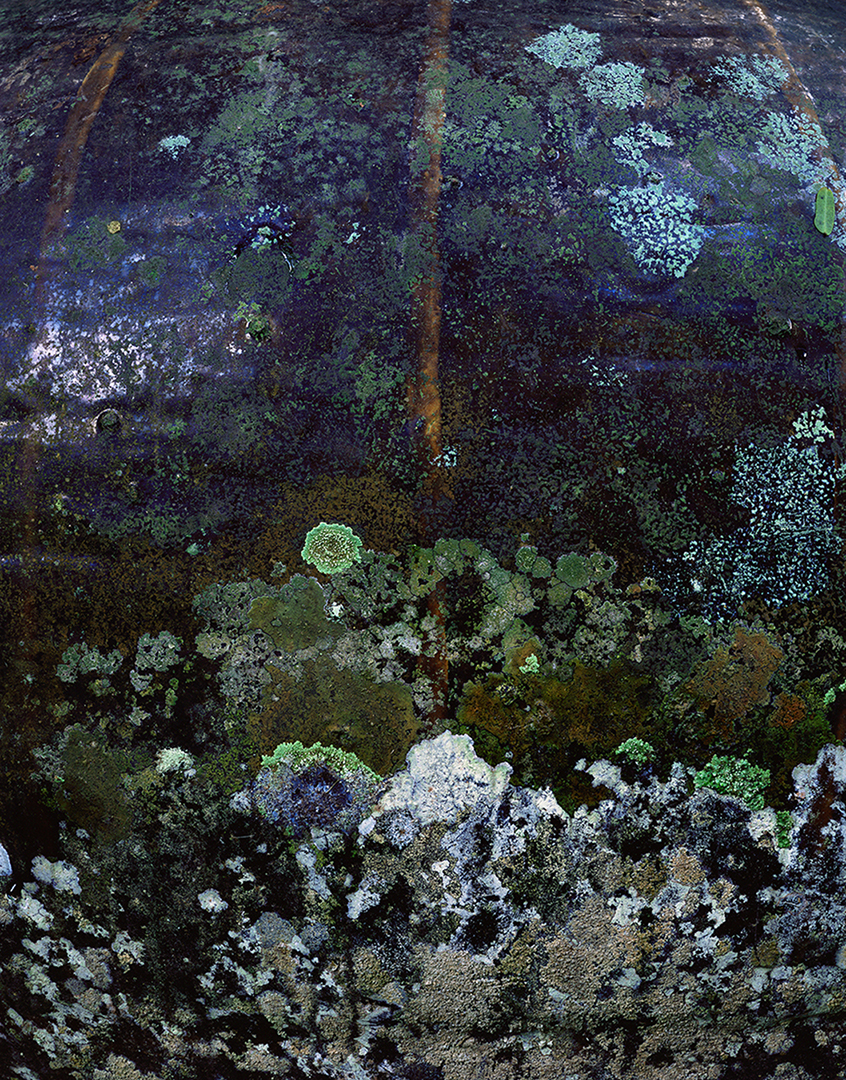















Hélène Binet: Oscillations
from Villa Saraceno to Lunuganga Garden
6 Dec—31 Jan 2025Oscillations is Hélène Binet’s second solo show at Large Glass. A newly commissioned text by Emily LaBarge accompanies the exhibition, an excerpt of which below:
There are lines straight and curved, sometimes both, or indeterminate, bulging here only to pursue an even course there, or take a gentle slope, or turn a corner, or overlap with other lines and shapes, straights and narrows, to form composite configurations, or breaking off here and there and then passing out of the frame somewhere into the distance where they may or may not continue, up or down, rounded or even, you choose. There is light and dark and lighter and darker and lightest and darkest, because, after all, this is what photography consists of, along with time and its passage — an eternal oscillation that shapes how and what we see.
A view inside a view, a door inside a door, a column behind a column behind a column bisecting an elegant arched doorway, exacting Renaissance proportions, sightlines from one side of a Palazzo to another, and then the other side to the other, as if presenting apertures within apertures for the aperture of the camera to close upon and seize. In Hélène Binet’s work, repetition, rhythm, sequence, and seriality are the order of the day, none of which are possible without the passage of time — and with it, light, ever the photographer’s loyal source. She refers to her projects, most of which take place in specific architectural locations, as essays, the form that is, in its best iterations, famously mobile, intuitive, wayward, proceeding slowly, with curiosity, according to a perceived logic that cannot be forced or quickened. It is, in short, akin to looking, hard, carefully, again and again, and waiting to see what happens.
Emily LaBarge is a Canadian writer based in London. She is a regular contributor to the New York Times and 4Columns. Her first book, Dog Days, will be published in the UK by Peninsula Press in 2025.
There are lines straight and curved, sometimes both, or indeterminate, bulging here only to pursue an even course there, or take a gentle slope, or turn a corner, or overlap with other lines and shapes, straights and narrows, to form composite configurations, or breaking off here and there and then passing out of the frame somewhere into the distance where they may or may not continue, up or down, rounded or even, you choose. There is light and dark and lighter and darker and lightest and darkest, because, after all, this is what photography consists of, along with time and its passage — an eternal oscillation that shapes how and what we see.
A view inside a view, a door inside a door, a column behind a column behind a column bisecting an elegant arched doorway, exacting Renaissance proportions, sightlines from one side of a Palazzo to another, and then the other side to the other, as if presenting apertures within apertures for the aperture of the camera to close upon and seize. In Hélène Binet’s work, repetition, rhythm, sequence, and seriality are the order of the day, none of which are possible without the passage of time — and with it, light, ever the photographer’s loyal source. She refers to her projects, most of which take place in specific architectural locations, as essays, the form that is, in its best iterations, famously mobile, intuitive, wayward, proceeding slowly, with curiosity, according to a perceived logic that cannot be forced or quickened. It is, in short, akin to looking, hard, carefully, again and again, and waiting to see what happens.
Emily LaBarge is a Canadian writer based in London. She is a regular contributor to the New York Times and 4Columns. Her first book, Dog Days, will be published in the UK by Peninsula Press in 2025.